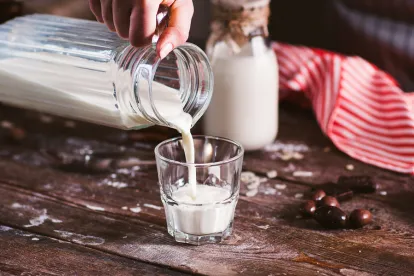The beverage industry came out on top in a pair of recently dismissed lawsuits alleging the use of the term “vanilla” on drink labels was misleading, where the vanilla flavor allegedly did not come exclusively from the vanilla bean plant. Howard Clark v. Westbrae Natural, No. 20-cv-03221-JSC (N.D. Cal. December 1, 2020); Ryan Cosgrove et al. v. Blue Diamond Growers, No. 19-Civ-8993 (S.D.N.Y. December 7, 2020).
In Clark v. Westbrae, plaintiff alleged the labeling of Westbrae Natural’s Organic Unsweetened Vanilla Soymilk was misleading because a significant portion of the vanilla flavor came from sources other than the vanilla plant. Based on these allegations, plaintiff brought claims for violations of California’s Unfair Competition Law, Consumer Legal Remedies Act, and False Advertising Law.
Noting that nothing in the word “vanilla,” by itself, suggests the flavor comes exclusively from the vanilla bean, Magistrate Judge Jacqueline Corley of the Northern District of California held plaintiff failed to plausibly allege a reasonable consumer would be misled. In reaching this conclusion, the court noted the packaging did not contain any other words or images to suggest the vanilla flavor came exclusively from the vanilla bean.
Plaintiff’s allegations regarding a 2020 consumer survey were not enough to save their claims. This survey supposedly showed 69.5% of 400 consumers believed the word “vanilla” on Westbrae’s product meant the product’s flavor came exclusively from the vanilla bean. However, citing Becerra v. Dr. Pepper and Yu v. Dr. Pepper, two cases we previously blogged about, the court noted a consumer survey alone cannot satisfy the reasonable consumer test where plaintiff has not otherwise plausibly alleged that a reasonable consumer would be deceived. Here, the court found plaintiff’s survey allegation “does not make plausible that reasonable consumers understand that ‘vanilla’ soymilk is flavored exclusively with vanilla bean.”
In Cosgrove v. Blue Diamond, plaintiffs alleged the word “vanilla” on packaging for Blue Diamond’s vanilla almond milk was misleading because the almond milk “has less vanilla than the label represents, contains non-vanilla flavors which provide its vanilla taste,” and “contains artificial flavors, not disclosed…on the front label as required by law and consumer expectations.” Plaintiffs alleged violation of sections 349 and 350 of the New York General Business Law, negligent misrepresentation, breach of express warranty, breach of implied warranty of merchantability, violation of the Magnuson Moss Warranty Act, common law fraud, and unjust enrichment.
Like in Clark, the Cosgrove court found the use of the term “vanilla” by itself does not communicate to a reasonable consumer that the product was made exclusively with vanilla beans or vanilla bean extract. Instead, the court determined a reasonable consumer would understand “vanilla” to refer to a flavor, not an ingredient. Without additional representations about how that flavor is achieved, the court found a plain “vanilla” representation “would be misleading only if the [p]roduct did not actually taste like vanilla.” Since plaintiffs conceded Blue Diamond’s vanilla almond milk did in fact taste like vanilla, the court found Defendant’s “vanilla” representation was not misleading.
In reaching its conclusion, the court relied heavily on two other recent decisions from the Southern District of New York that likewise rejected arguments that simply labeling a product with the word “vanilla” would mislead a reasonable consumer into thinking it was made with vanilla beans or vanilla extract—Steele v. Wegmans Food Markets (a case we previously blogged about) and Pichardo v. Only What You Need. The Cosgrove plaintiffs tried, unsuccessfully, to distinguish Steele and Pichardo in three ways. First, they argued that unlike plaintiffs in those cases, they alleged that the use of artificial vanilla flavor made the product “taste differently from the name of the flavor indicated.” However, the court found this was belied by allegations in the amended complaint, which stated that artificial vanilla flavor was used “to achieve the same vanilla taste.” Second, plaintiffs argued that, unlike in Steele and Pichardo, they alleged the presence of artificial vanilla flavoring was material to their purchasing decision. However, the court found this went only to materiality—it had no bearing on whether the labeling was misleading in the first place. Lastly, plaintiffs argued that the proportion of real vanilla to artificial vanilla flavoring was much smaller here than in either Steele or Pichardo. However, the court found this was beside the point; the only relevant inquiry was whether the product had the vanilla flavor, not what ingredients were used to achieve that flavor.
2020 has seen a substantial number of “vanilla” lawsuits. The courts’ decisions in these cases highlight a definite trend; a complaint that alleges defendant’s use of the word “vanilla,” on its own, is false or misleading because the product’s vanilla flavor allegedly does not come exclusively from vanilla beans is unlikely to pass muster, even at the pleading stage. Defendants can drink to this victory, but don’t forget to watch this space for further developments.





 />i
/>i
